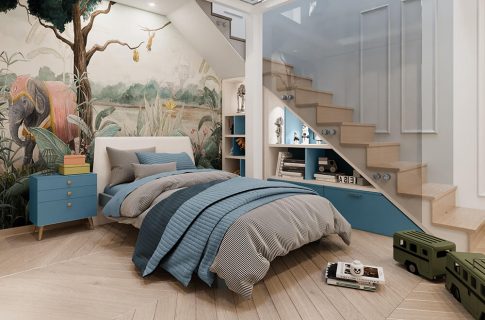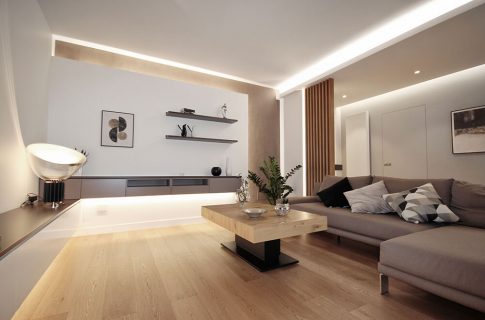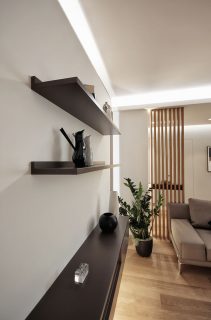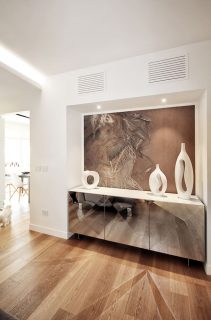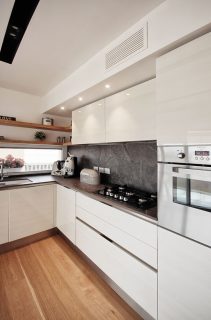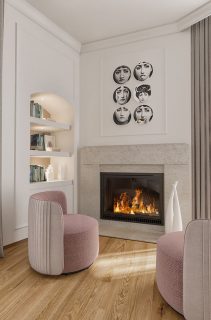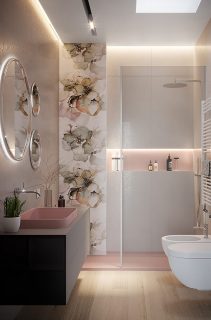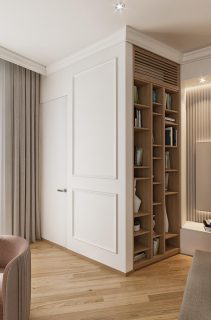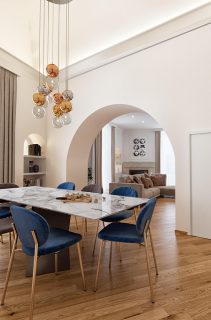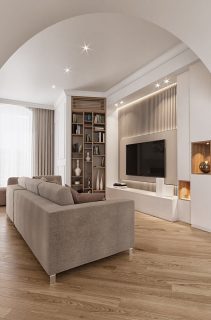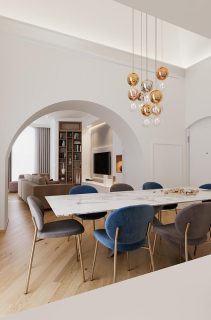Interview | Gaia Miacola architect and interior designer
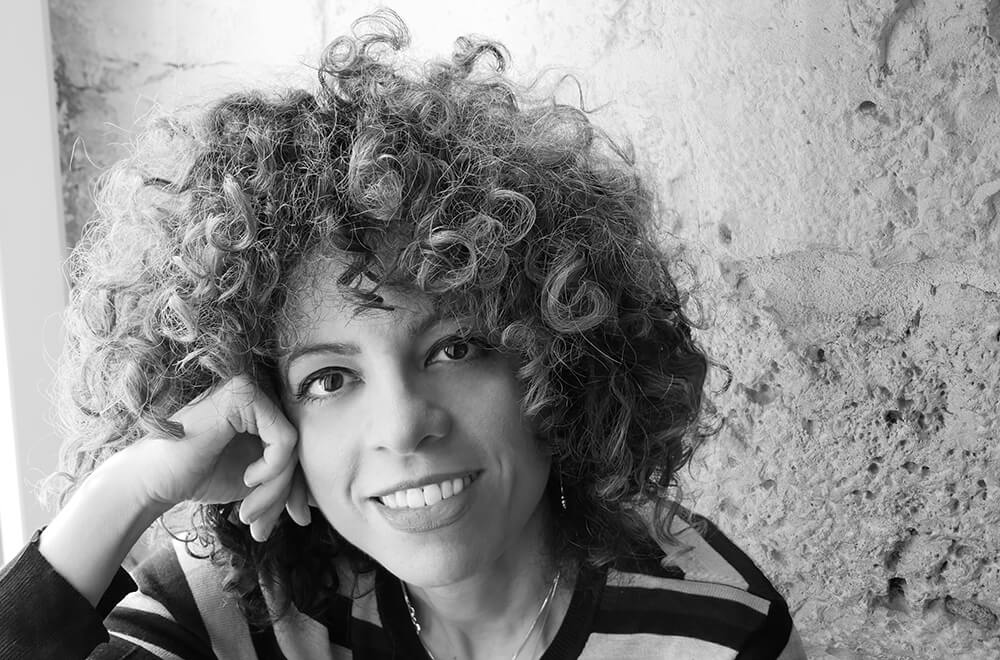 Gaia Miacola is an architect and interior designer, known in the Italian web panorama for the quality and quantity of content she offers through the various social channels and dedicated blog. Fascinated by her work and the unusual versatility of her communication, we asked her to tell us a little about herself and her way of experiencing the world of interior design “2.0”
Gaia Miacola is an architect and interior designer, known in the Italian web panorama for the quality and quantity of content she offers through the various social channels and dedicated blog. Fascinated by her work and the unusual versatility of her communication, we asked her to tell us a little about herself and her way of experiencing the world of interior design “2.0”
Your Instagram profile is an inspiration for anyone who wants to learn something and receive some good ideas for their home. How do you deal with this social network? How important do you think the activity on this platform is?
At the moment Instagram is not my only communication channel. I also have Facebook, a private channel and of course my blog from which I direct the dissemination of my web content. Initially I only used the Blog, but later I felt the need to add other channels, including Instagram in particular, to have faster and more direct contact with people. Instagram offers the great advantage of being able to communicate through images, which are fundamental in my sector not only to express themselves, but also to reach the imagination of customers more effectively.
The choice to use social media was certainly a winning one for me: from having one or two requests for projects per month, I now find myself managing over thirty or forty.
Tell us about your blog. For an architect and interior designer it’s a rather atypical choice for communicating their work. How come you thought of leaning on this medium? How much does it affect your work? What approach do you follow in choosing the topics to be treated and in writing the articles? Do you do everything yourself or are you helped by a small editorial team?
Writing about my passions has always been my dream. As a child I had fun making small Look Books, the preamble of a real magazine. Nowadays there are many tools for those who want to make information, so I took the opportunity by opening this channel to talk about my work, my projects and my great love for interior design. I believe that its strength lies in the passion I put into what I do, being in fact not an instrument of circumstance but a natural extension of my work. In reality, the blog is nothing more than an inspirational diary that I use to get in touch with new people as well as those who already follow me to offer them solutions to problems or simply good advice.
At the moment I do everything myself, writing and managing editorial programming without any support. This is obviously a great sacrifice, but in these two and a half years of activity I have also been able to derive a lot of satisfaction from it and spurs to continue doing better and better.
In a previous interview you said that being an interior architect in southern Italy is very different than doing it in Milan, just as it is still different to practice the profession in some large European capital. What are the main differences? Do you think that the heritage of your homeland has also influenced the formation of your style?
Personally I don’t think I’ve ever found big differences; in Italy and abroad, a customer is always the same. On the other hand, the issue of distance-related difficulties is different: the further away you are, the more difficult it is to manage work effectively. For this reason, in my sector is important to plan the various design phases from the outset, clarifying with the customer – especially if distant – the risks and difficulties of remote management. Only by clarifying these points is it possible to do a job that will satisfy both; vice versa there is no need to start the collaboration.
From my experience I have not found much resistance on this point, although I admit that it does not fully reflect my way of working. It is in fact very important for me to be there, to follow each step and personally manage the different phases until the finished project.
Another aspect that characterizes you is the very high quality of your renders, with an impressive level of photorealism. What is the role of a renderer for you in defining a project?
I personally think it is very important both from the customer and from the architect. Some time ago I made catalogs for large furniture companies performing photorealism. Realizing the enormous potential of this tool, I later decided to introduce this solution also in the private project, offering the customer an instrument able to dispel doubts and indecisions in a few simple images. Anyone working in the sector knows that a design or even a non-photorealistic render does not communicate anything and indeed often becomes a reason for misunderstandings and indecisions on the part of the customer.
What I do is simple and straightforward: a glance is enough to understand if the project is going well or not, if the furniture is the desired one or if the chosen solutions still meet expectations.
Following your activities, we have noticed that much of your efforts focus on creating an overall harmony of environments, where every structural detail is fundamental. How important do you think furniture is for the overall success of a project?
During the design phase, I make sure that all the pieces indicated by me are purchasable, or possibly custom-made, also using photorealism to give the customer a clear and precise idea of the finished product. Often in projects I tend to insert some design product where possible, perfect to give a distinctive touch to the entire composition; nevertheless it is not always possible to do it, both for aesthetic and economic needs, which is why I concentrate my efforts in recommending quality furnishings anyway, avoiding too cheap or poorly made choices unless specifically requested by the customer.
Let’s talk about interior design and choice of furnishings. How do these choices generally take place during this phase? Do you happen to have a style or brands on which you focus most on your works? What role does collaboration with the furniture retailer play in these phases?
Those who follow me know my style and the way I move within a project. When I am dealing with customers who are undecided or disagree on my design choices, I try to establish a dialogue with them, offering images and variations to choose from as to find the most suitable solution. The important thing is to create an ambivalent relationship and mutual exchange. During the realization of a project it is inevitable to interface with a large number of actors including furniture makers, bricklayers, dealers and more. In these cases, the difficulty often lies in effectively coordinating everyone’s work and giving the right direction to everyone’s efforts.
I find the contribution that an interior designer can give to the project very useful and of fundamental importance. It is a figure capable of carrying out what has been thought. The online showrooms are convenient for finding lots of information and viewing the infinite panorama of choices. The interior designer who takes care of the linear development and the estimate prior to the purchase of the furniture is irreplaceable.
Based on your experience, what do you think are the current trends in the interior design sector? Can you identify a taste, a material, or generally a style from this particular historical period?
More and more often I happen to see a change in requests but above all in the style of customers. The figure of the unwary customer without any opinion on the project that will be built is being gradually supplanted by a much more informed and demanding clientele, capable of clearly presenting their taste and personality. We often look for design pieces, a sign that social media and information are increasingly penetrating society as a global information channel, giving everyone the opportunity to understand each other much more than before.
So do you think social media have a positive impact for those like you who work in the design sector? Isn’t there a risk that communication channels and social media will “steal” your work?
I think that at the dawn of 2020 and the worldwide spread of Internet, anyone who wants to get informed and learn something new can do it freely, whatever the sector or specificity of the skills required. What is really missing is a perspective, or rather a filter, capable of ordering all this material according to the desired function or quality. And this I think is the task of the interior designer, giving a right perspective, calibrating the enormous amount of information with which he will find himself in dialogue. Nowadays the client who comes to me is already moderately informed, already presents his own ideas and in essence already knows how to distinguish what he likes from what is not right for him.
From a communicative point of view, do you already have in mind some news for your work?
At the moment I closed the projects for the whole 2020. The influx of requests that I receive per month is incredible, and if I want to deal with them directly; it is obviously impossible to accept them all without risking transforming my passion into a sort of “design supermarket” . The relationship with the customer as well as my direct involvement in every design phase is in fact fundamental to express myself in the best way and really get satisfaction from what I do.
From a communicative point of view, I actually have something in mind, some very clear ideas on future prospects and proposals so you won’t have to wait very long: already in autumn it will happen to find out what it is. One thing is certain: you must never stop. In this sector, as well as in many others, getting there first and being ready to take advantage of new opportunities is essential to keep up with the times. I could say that in part I am sorry, because dedicating myself so much to my job often makes it impossible for me to take breaks or take holidays, but the reality is that anyone who loves his job like me never really feels the need to get away from it anymore so much.
